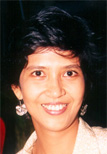East Carolina University ONE of the early telemedicine sites in the
world started at East Carolina University (ECU) in Greenville, North Carolina. ECU's
School of Medicine introduced telemedicine consultation in late 1992 when the the state's
largest maximum security prison contracted the school to provide telemedicine services.
According to ECU's director of
telemedicine, David C. Balch, that single step opened corridors to explore the practice
and implementation of telemedicine.
Over the years, the technical team
at ECU has integrated advanced telecommunications technologies into a homogenous hybrid
network of microwave, T1, ATM, ISDN, and Internet video which allows for the deployment of
the most cost effective technology to each site.
The microwave network provides full
duplex connections statewide to 40 sites with three discrete channels of audio, video, and
data. The ATM/SONET network, which is part of the North Carolina Information Highway,
provides links to 200 distance learning sites and 11 telemedicine sites.
The network is also connected to six
rural hospitals and four medical centres in the region. These different networks are
integrated into a large hybrid network called REACH-TV (Rural Eastern Carolina Health
Television).
REACH-TV and the ECU's Telemedicine
Training Program are conducting courses and seminars, continuing medical education
programmes, and managing a wide variety of video-conferences over each of these networks.
Balch says that the large testbed
enabled them to test and develop technology resources, network management skills,
scheduling tools and the infrastructure for the next generation of telemedicine networks.
``Our telemedicine programme will
continue the integration of patient information and management tools into its network,''
he says, adding that ECU will begin to test and implement Virtual Reality tools in the
telemedicine environment.
Its hybrid network of rural
hospitals and medical centres will be expanded alongside plans to introduce telemedicine
into homes under its new TeleHome Care programme.
Balch also revealed that doctors at
ECU had the honour of being the first to participate in a telemedicine program on
demonstration at SIGGRAPH held in Los Angeles in 1995.
``Doctors had a chance to try out
their bedside manner when experts linked Greenville, North Carolina, to Los Angeles for
three full days of telemedicine consults,'' he said.
A fibre-optic super pipe, stretching
3,000 miles across the country, provided a cyberspace portal connecting over 80 Los
Angeles participants to ECU physician specialists.
Crowds flocked to ECU's telemedicine
presentation, aptly titled ``Doc In A Box'', where they were able to experience the world
of telemedicine first-hand.
SIGGRAPH's more adventurous
attendees signed up for cross-country demonstration consultations. ECU offered 15
different medical specialities from which participants could choose. Sign-up was available
over the Internet via ECU's telemedicine homepage or during the SIGGRAPH conference
through PC desktop tele-conferencing with North Carolina telemedicine schedulers.
At the time of the appointment, Los
Angeles participants entered the telemedicine exam room where a telemedicine specialist
presented the ``patient'' to a consulting physician ... three thousand fibre-optic miles
away. Special telemedicine diagnostic tools allowed ECU physicians to enter the flesh and
blood world of the participant.
Working with the telemedicine
presenter, the doctor could direct the use of water soakable cameras affixed with
dermascope, otoscope and opthalmoscope adapters.
As an added bonus, telemedicine
participants experienced ``the waiting room of the future.'' This high-tech waiting room
featured the latest in relaxation technology. Outside the telemedicine exam room,
participants could sink into cocoon-like lounge environments and immerse themselves in
full-body audio, light, and vibration therapy.
ECU's demonstration also made
telemedicine history as the first coast-to-coast telemedicine link using Asynchronous
Transfer Mode (ATM) technology.
Apart from ECU, other corporate
partners on this team included Pitt County Memorial Hospital, Loma Linda University
Medical Center, Sprint Midatlantic Telecom, FORE Systems, Andries Tek, Sun Microsystems,
Parallax, Computer Innovations Consulting, InSoft, Quantitative Medicine Inc, and the
North Carolina Health Care Information and Communications Alliance.
For more information, go to Telemed.

